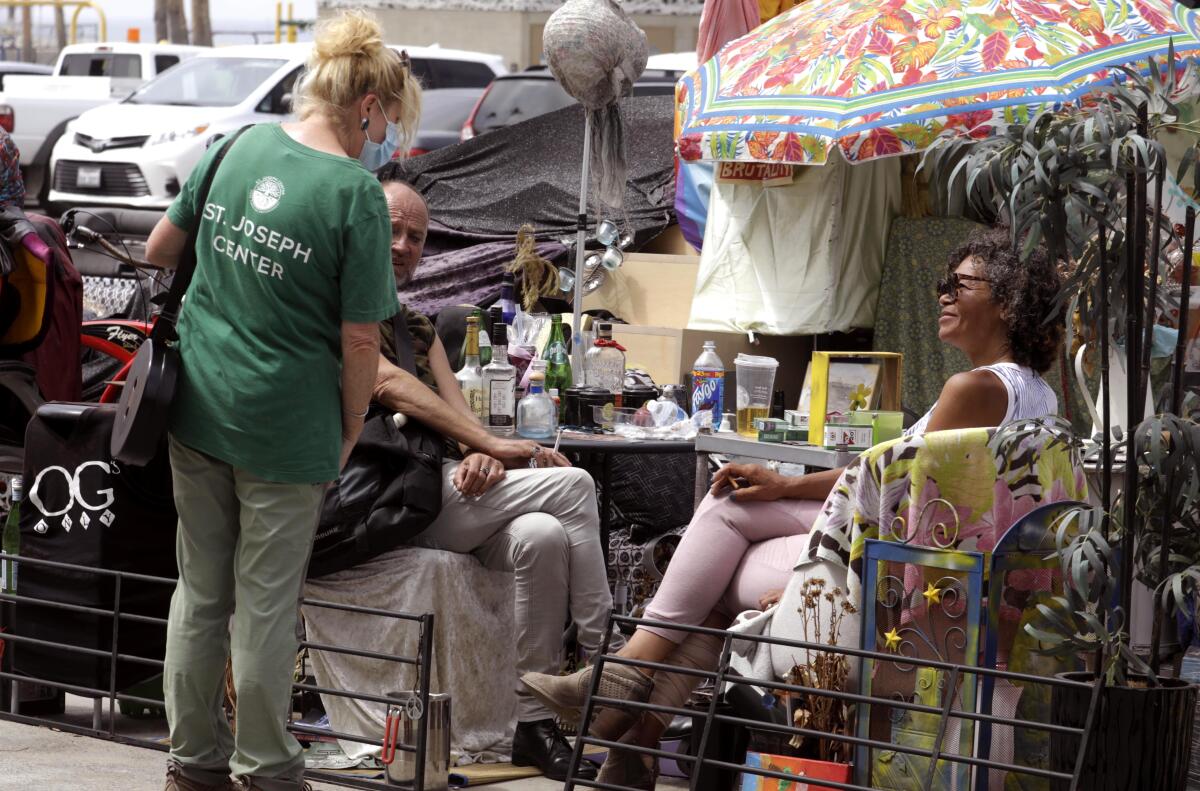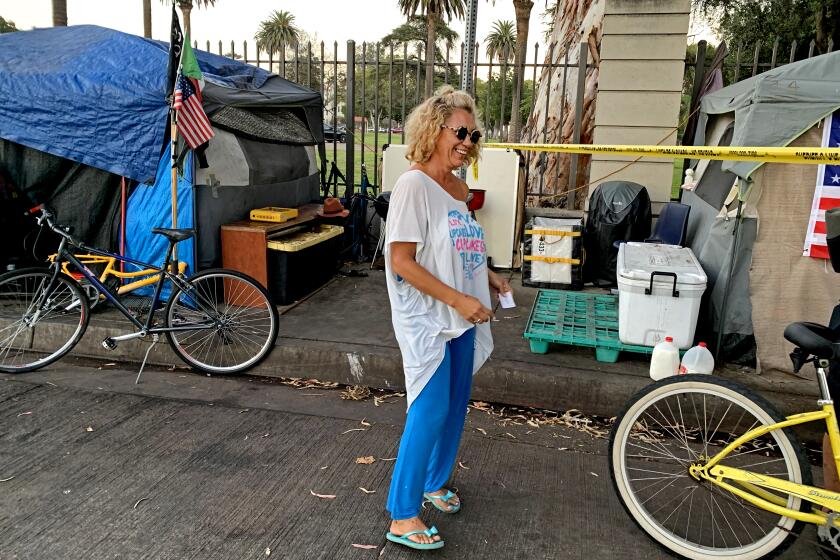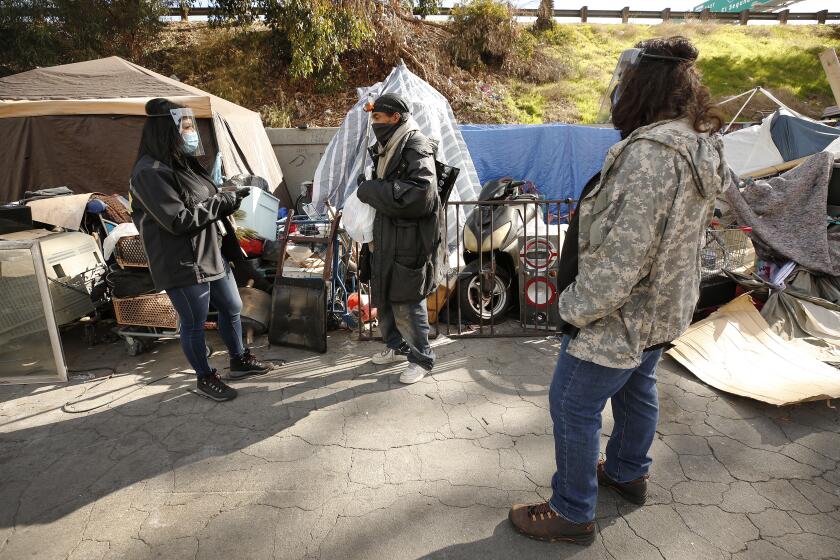Editorial: Los Angeles housed hundreds of homeless people. Now we need to keep them there

- Share via
Hundreds of homeless people in large encampments in L.A. city parks moved into temporary and permanent housing this year as part of high-profile and sometimes controversial efforts to clear those parks. That was a remarkable accomplishment for the service providers and outreach workers who made it happen. Now comes the part that is just as difficult — keeping people housed.
In Venice, 213 people moved off the boardwalk and into interim housing, during a six-week outreach effort this summer. As of this month, 109 are still living in interim housing, 62 are in permanent housing, and 42 left housing altogether according to the service provider, St. Joseph Center. It’s particularly good that so many have moved into permanent housing.
Out of 178 people who received some kind of temporary housing by the time the Echo Park Lake closed in late March, 74 people have since left housing altogether, according to Heidi Marston, executive director of the Los Angeles Homeless Services Authority. They are assumed to be homeless again, and that’s unfortunate.
It’s great to be able to house an entire homeless encampment. But it should be done for reasons of public access and safety, not to placate whichever neighborhood complains the loudest.
And in MacArthur Park, the Homeless Services Authority and the service provider, PATH, moved 164 people into some kind of temporary housing, primarily Project Roomkey rooms, between the beginning of the year and Sept. 24. From that first group, the Homeless Services statistics show that 52 people moved out to what the agency records as “unknown” or “other” locations. In most cases, that probably means back to the streets. (Between Sept. 27 and Oct. 13, another 99 people moved inside before a portion of the park was closed. It’s unclear what’s happened to them.)
There have been other so-called “encampment-to-home” efforts around the city including one in Westchester Park. These three were the most high-profile this year.
But why does anyone leave temporary housing, especially when it’s a hotel or motel room of one’s own?
In all the high-profile park closures, service providers spent months doing outreach, getting to know homeless people by name, persuading them that interim housing would be a better pathway to a better life than a tent in a park. But for some, once they moved, they couldn’t live with the reality of being far from the park or in a hotel or motel they didn’t like.
Los Angeles’ anti-camping ordinance is now in effect. But it should not be enforced until the street strategy for offering housing to homeless people is in place.
People who saw their choices as eviction from the park or go into temporary housing may have decided to say yes — but once they got somewhere and didn’t like the location or the people down the hall from them or whatever, they left. Marston said some of the Echo Park contingent have returned to sidewalks near Echo Park Lake.
And there was plenty not to like about the federally funded Project Roomkey hotel and motel rooms. Intended for homeless people particularly vulnerable to COVID-19, they are typically under a slew of rules: daily temperature checks, curfews, head counts. Following strict protocols, when a COVID outbreak occurred in a hotel or motel the hotel quarantined everyone and people were not supposed to leave. Of course, this wasn’t completely enforceable. Jennifer Hark Dietz, the deputy chief executive of PATH, said a number of the homeless individuals from MacArthur Park are day laborers. When a lockdown occurred at a hotel, they moved out rather than risk losing their jobs.
Marston said the agency and other service providers are still trying to figure out the right balance between infringing on people’s privacy and keeping people safe and connected to services and the assistance they need to get into permanent housing.
Va Lecia Adams Kellum, the chief executive of St. Joseph Center, which housed people on the Venice boardwalk, attributes the relatively low number of people leaving temporary housing to their efforts to match people to the right housing for their needs. Also, she has more people living in less restrictive rented motel rooms than she does in Project Roomkey rooms. And 62 people have already moved to permanent housing. Meanwhile, the group continues to reach out to people who have left and Adams Kellum hopes to offer homeless individuals vocational training or even work with her outreach teams.
The bottom line is this: Moving homeless individuals out of parks and large encampments, and into temporary housing is a first step of what may be a long and complicated process. The ultimate and most difficult goal here is to get people into permanent housing.
More to Read
A cure for the common opinion
Get thought-provoking perspectives with our weekly newsletter.
You may occasionally receive promotional content from the Los Angeles Times.












